Bar Graph
Introduction
A Bar Graph presentation is a numerical representation of information. Right now, will become familiar with the meaning of a reference diagram, including how to perceive the various types of visual diagrams.
What is a Bar Graph?
A Bar Graph is a diagram that uses vertical or level bars to show comparison between various categories of data. There are two axis, one is flat i.e X axis and other one is vertical i.e Y axis. X-Axis represents the categories being thought about and Y-Axis describes the values of information for the respective class. Visual charts can be represented as either level bars or vertical bars.
Bar chart is one of the simplest and generally used methods for presenting information in graphs. Questions based on these charts are regularly asked in serious exams. In the bar graphs, the questions based on percent change and weighted averages are by and large asked in exams.
Simply put, a reference diagram is an chart that uses bars to show comparisons between categories of information. The bars can be either level or vertical. Reference charts with vertical bars are sometimes called vertical structured presentations.
A visual diagram will have two dimensional axes. One axis will depict the types of categories being analyzed, and the other will have numerical values that represent the values of the information. It does not make any difference which axis is which, however it will figure out what structured presentation is shown. In the event that the descriptions are on the flat axis, the bars will be situated vertically, and if the values are along the level axis, the bars will be arranged on a level plane.
Different Types of bar graph
Horizontal Graphs
Visual diagrams are commonly drawn with vertical bars which suggests that the taller the bar, the greater the Value. Subsequently, it is Possible to make various even bar charts which implies that on the off chance that the Bar is longer, at that point, the data is bigger.
This turns out to be especially incredible when the distinctive categories have long titles that would be difficult to make reference to beneath a run of the mill vertical bar, or when there are a higher number of objects and there is insufficient area to contain all the various columns necessary for a vertical graph in a page.
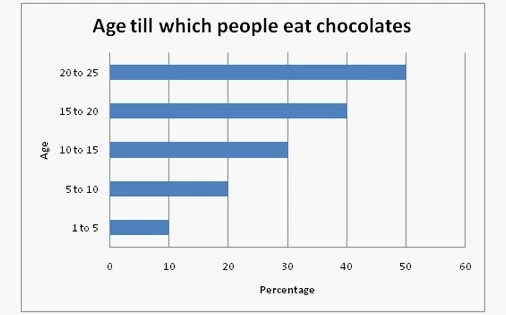
Grouped charts
This graph indicates information about various sub-groups of the essential objects. In the chart given underneath, a grouped structured presentation has been used to demonstrate the diverse sub-groups of materials. These graphs are used to demonstrate a couple of sub-groups of each item however it should be taken consideration that the graphs does not contain excessive information. These graphs can be drawn on a level plane or vertically which depends on the various values of data provided in the problem.
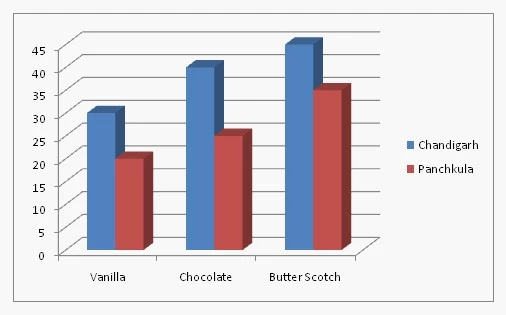
Stacked Bar Charts
These bar charts comprise of some bars which are sequentially put on one another to represent a single diagram. The all out length of the bar will give data of the aggregate sum of classification ,whereas various colors or size will be used to give data on the overall measure of the sub-categories given in the question .Such graphs are every now and again asked in the test and that is the reason they are significant according to test perspective.

Related Videos:
- Construction of Bar graphs on Graph paper
- Construction of BAR graph on Y- axis
- Construct a bar graph
Solved Questions On Bar Charts:
Instructions for questions 1 - 5: Study the following graph carefully and answer the questions given below:
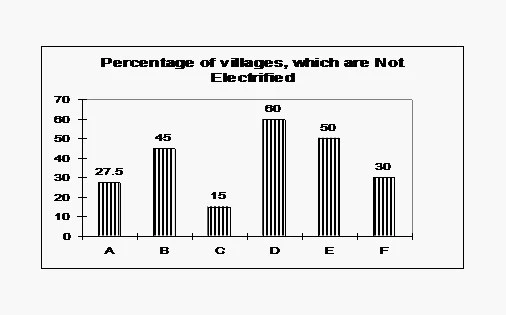
Ques 1: If the Govt. decides to release funds for speedy electrification, which state will get 3rd rank in the order of priority?
Ans 1:
The ranking based on percentage of villages that are not electrified is
Rank I
Rank II
Rank III
D
E
B
It is evident that to provide funds for speedy electrification, state 'B' will get 3rd rank.
Ques 2: Which state has three times the percentage of non- electrified villages in comparison to 'C' state?
Ans 2:
As depicted in the graph, percentage of non electrified villages of 'C' = 15%.
Percentage of non electrified villages of 'B' = 45% which equals to three times of C's percentage. Therefore, state B is the answer.
Ques 3: In case of State B, what percent of villages are electrified?
Ans 3:
In case of State B, 45 % of villages are not electrified.
Percentage of electrified villages = (100 – 45) = 55%.
Ques 4: How many states have atmost 40% or less non electrified villages?
Ans 4:
For States A, C , F (i.e. 3 states), there are 40% or less non electrified villages.
Instructions for questions 6 to 10: Study the following graph carefully and answer the questions given below:
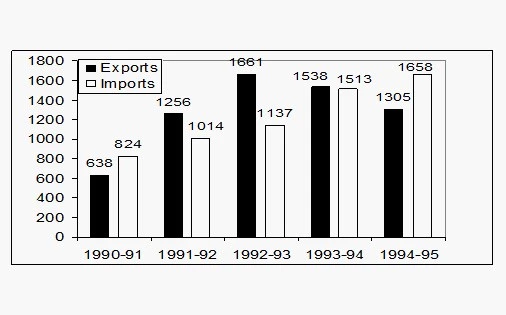
Ques 6: What is the ratio of exports in years 1990-91 & 1992-93 together to the imports in the same year?
Ans 6:
Total exports of 1990-91 and 1992-93 = 638 + 1661 = 2299
Total exports of 1990-91 and 1992-93 = 824 + 1137 = 1961
Therefore, the required ratio = 2299 / 1961 = 1.17
Ques 7: In which of the following years was the gap in the exports and imports the maximum?
Ans 7:
Gap for 1994-1995 = 1658-1305 = 353
Gap for 1992-1993 = 1661-1137 = 524
Gap for 1993-1994 = 1538-1513 = 25
Gap for 1990-1991 = 824-638 = 186
Hence, it is evident that 1992-1993, the gap of 524 in the exports and imports is maximum.
Ques 8: What is the ratio of years having above average imports to those having below average imports in the given period?
Ans 8:
The average imports of all years = (824+1014+1137+1513+1658)/5 = 1229.2
The years 1990-91, 1991-92, and 1992-93 have imports below the average imports.
The years 1993-94 and 1994-95 have imports above the average imports.
Thus, the required Ratio = 2:3
Ques 9: The exports in 1993-94 are approximately, how many percent more than the imports of 1991-92?
Ans 9:
Exports is 1993-94 = 1538.
Imports is 1991-92 = 1014.
Thus, required percentage = 100 x (1538 - 1014) / 1014 = 51.6 %.
Important Chapters:
Bar chart is one of the simplest and generally used methods for presenting information in graphs. Questions based on these charts are regularly asked in serious exams. In the bar graphs, the questions based on percent change and weighted averages are by and large asked in exams.




The ranking based on percentage of villages that are not electrified is
Rank I
Rank II
Rank III
D
E
B
As depicted in the graph, percentage of non electrified villages of 'C' = 15%.
Percentage of non electrified villages of 'B' = 45% which equals to three times of C's percentage. Therefore, state B is the answer.
In case of State B, 45 % of villages are not electrified.
Percentage of electrified villages = (100 – 45) = 55%.
For States A, C , F (i.e. 3 states), there are 40% or less non electrified villages.

Total exports of 1990-91 and 1992-93 = 638 + 1661 = 2299
Total exports of 1990-91 and 1992-93 = 824 + 1137 = 1961
Therefore, the required ratio = 2299 / 1961 = 1.17
Gap for 1994-1995 = 1658-1305 = 353
Gap for 1992-1993 = 1661-1137 = 524
Gap for 1993-1994 = 1538-1513 = 25
Gap for 1990-1991 = 824-638 = 186
Hence, it is evident that 1992-1993, the gap of 524 in the exports and imports is maximum.
The average imports of all years = (824+1014+1137+1513+1658)/5 = 1229.2
The years 1990-91, 1991-92, and 1992-93 have imports below the average imports.
The years 1993-94 and 1994-95 have imports above the average imports.
Thus, the required Ratio = 2:3
Exports is 1993-94 = 1538.
Similar Questions
Read the graph and answer the following questions
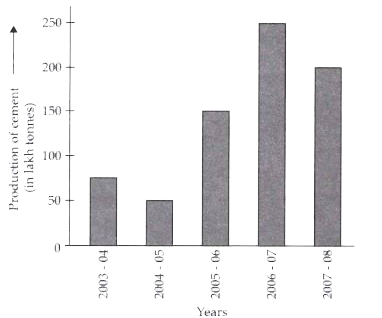
What information is conveyed by the bar graph01:41View SolutionDouble Bar Graph : A bar graph showing two sets of data simultaneously . It is useful for the comparison of the data.

What is the information given by the double bar graph ?01:45View SolutionRead the bar graph shown in figure and answer the following questions.
What is the information given by the bar graph?
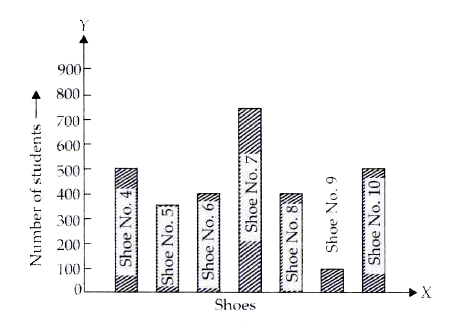 01:50View Solution
01:50View SolutionRead the following bar graph given in figure and answer the following questions.
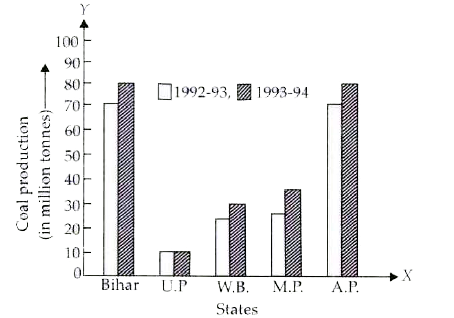
(i) What information is given by this bar graph?01:39View SolutionRead the bar graph and answer the following questons.

What information is given by graph ?01:34View SolutionWhat is the height of each bar in a percentage bar graph?
01:36View SolutionStudy the following bar graph carefully. Answer the following questions. What information can be obtained from the given bar graph?
02:51View SolutionAfter reading the bar graph given below answer the following questions what information is given by the bar graph?
01:33View Solution
